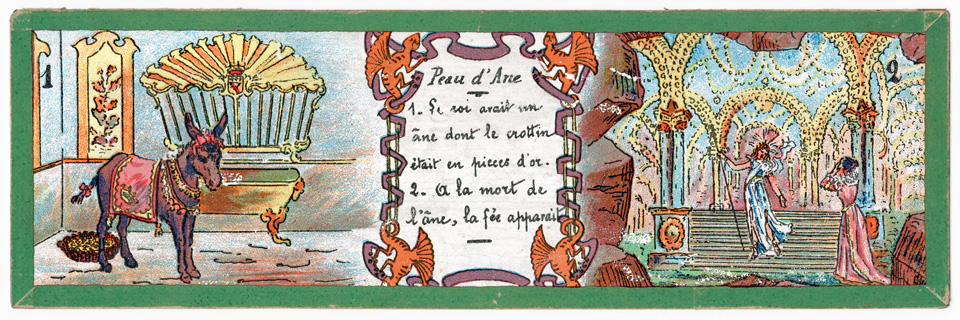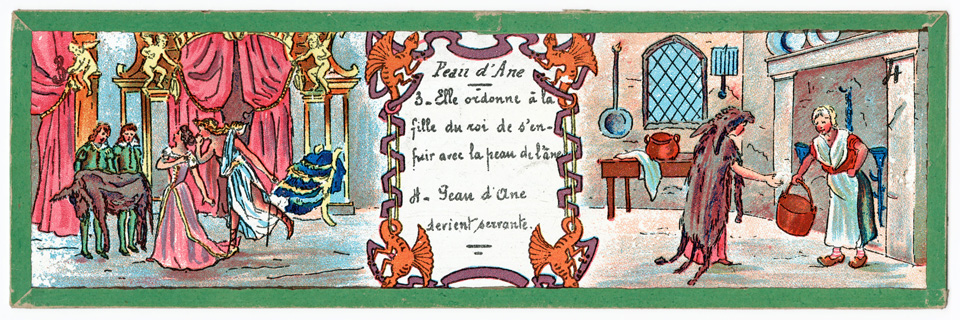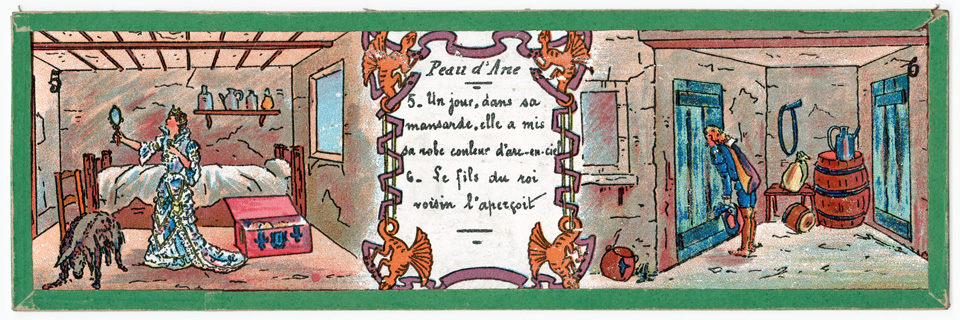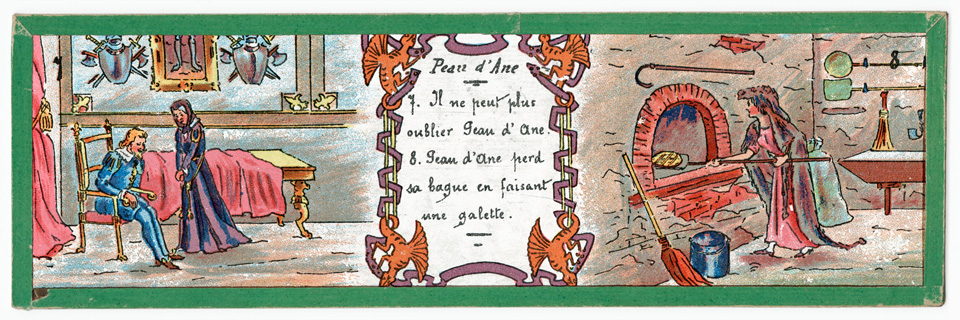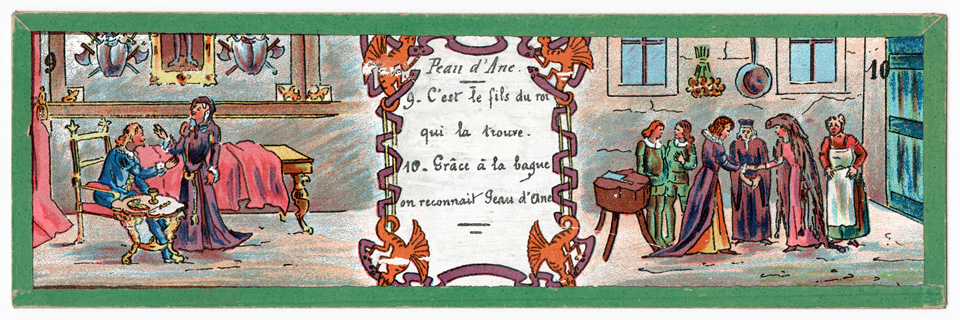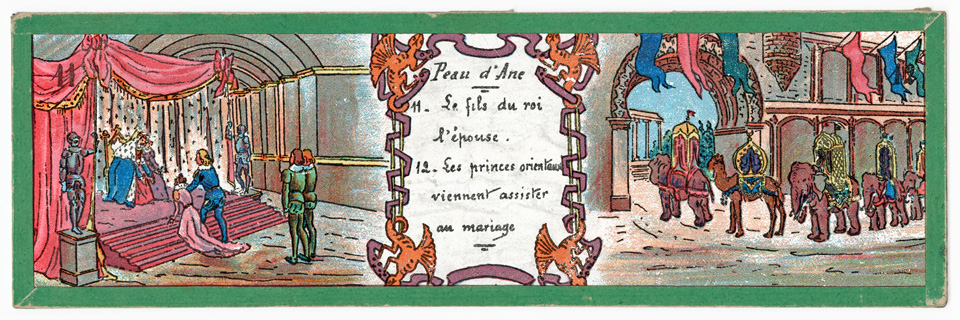Donkey Skin is a folk tale. At the end of the 17th century,
Charles Perrault wrote a version of it, all in rhyme:
|
« Il était une fois un Roi |
« Once upon a time there was a King |
It was this version that inspired Jacques Demy's film. Others exist – including one by the Brothers Grimm (Cat-Skin), in which the king really marries his daughter. Between the original tale and the film, Donkey Skin existed in many other forms: illustrated children's books, a silent film in black and white (1908)... and, in the 19th century, illustrations for magic lantern shows. These lanterns, ancestors of the cinema projector, were apparatuses into which were inserted glass plates that were painted or drawn, with the lantern's light projecting these images on the wall. Performances were often accompanied by the words of a storyteller called a bonimenteur.
These two series of magic lantern plates tell the story of Donkey Skin differently from the film, with certain episodes left out: here, for example, we do not know why the Princess had to flee for we do not see King ask for her hand. Nor is it said why the donkey died, nor why Donkey Skin makes a cake. These gaps were doubtless filled in by the bonimenteur who told the story at the same time as he projected the images.
The two versions also differ between themselves: in the first series (in 12 images), the mother's death is not mentioned, and the Prince soon meets his beloved, who is working as a servant. In the second series (in 24 images), the story is more developed, but the King chooses a wife during Donkey Skin's absence. And here, she works as a barnyard girl.
